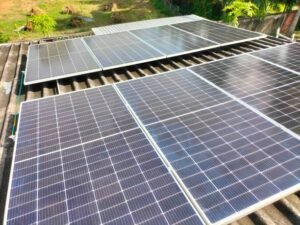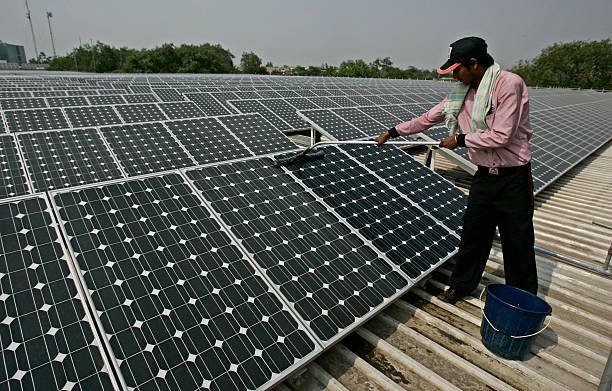PV panels, or photovoltaic panels, are essential components of solar energy systems. When configured in series, they are connected in a way that their voltages add up while the current remains the same, making them suitable for high-voltage applications. This configuration offers many benefits, such as improved efficiency in certain setups. However, like all solar installations, PV panels in series come with their own set of maintenance challenges. This guide explores these challenges and offers practical solutions to ensure your system performs optimally.
Understanding PV Panels in Series
When PV panels in series are connected in series, they form a single circuit with the combined voltage of all the panels. This setup is commonly used in residential and commercial solar systems where high voltage is required to power inverters and appliances efficiently. Despite its advantages, this configuration is not without its complexities, particularly when it comes to maintenance.
Key Maintenance Challenges
1. Shading Issues
One of the most significant challenges with PV panels in series is shading. When a single panel in the series is shaded, its output decreases significantly, affecting the performance of the entire string. This happens because the current in a series connection is limited by the weakest panel.
Solution: Install bypass diodes to allow current to bypass shaded panels, minimising the impact on the overall system. Regularly trim overhanging branches and clean panels to prevent shading from dirt and debris.
2. Mismatch in Panel Performance
Even slight variations in the performance of individual panels can impact the entire system. Factors such as manufacturing tolerances, degradation rates, or dirt accumulation can cause mismatches in panel output.
Solution: Conduct regular inspections to identify underperforming panels. Opt for panels with similar specifications and degradation rates during the installation.
3. Connector and Wiring Issues
Faulty connectors or wiring problems can disrupt the current flow in series connections. Loose or corroded connectors may cause intermittent faults or even complete system failure.
Solution: Inspect connectors and wiring regularly for signs of wear, corrosion, or damage. Replace faulty components promptly to avoid system downtime.

4. Temperature Variations
PV panels in series are sensitive to temperature fluctuations. High temperatures can reduce panel efficiency, while low temperatures may lead to voltage spikes that stress the system components.
Solution: Ensure proper ventilation around the panels to mitigate overheating. Use high-quality inverters capable of handling voltage fluctuations effectively.
5. Inverter Compatibility
In series connections, the inverter must handle the total voltage generated by the panels. Inadequate inverters can lead to energy loss or system inefficiency.
Solution: Choose an inverter with a voltage range that matches your series configuration. Consult with a professional installer to ensure compatibility and optimal performance.
6. Dealing with Microcracks
Microcracks in the solar cells are a common issue that can occur during installation or due to environmental stress. These cracks can reduce the panel’s efficiency over time, particularly in series connections where performance depends on each panel.
Solution: Handle panels with care during installation and regular maintenance. Use thermal imaging tools to detect microcracks early and address them before they escalate.
Importance of Monitoring Systems
Installing a monitoring system is crucial for identifying issues in real time. These systems allow you to track the performance of each panel and detect anomalies such as reduced output, shading, or wiring issues.
The Role of Flexible Solar Panels
For those seeking versatile solar solutions, flexible panels, such as the 200 watt flexible solar panel, are gaining popularity. These panels offer unique advantages, including lightweight design and adaptability to curved surfaces. However, they also present maintenance challenges, such as susceptibility to damage due to their thinner structure.
Solution: Handle flexible panels with extra care, especially during cleaning and transportation. Regularly inspect them for signs of wear or damage to maintain their efficiency.
Regular Maintenance Practices
1. Cleaning the Panels
Dust, dirt, and bird droppings can accumulate on PV panels and reduce their efficiency. Regular cleaning ensures optimal sunlight absorption.
- Use a soft brush or cloth with mild detergent and water.
- Avoid abrasive materials that could scratch the surface.
2. Inspecting Mounting Structures
Check for loose bolts, rust, or damage in the mounting structures to prevent misalignment or instability.
3. Testing Electrical Components
Periodically test connectors, wires, and the inverter to ensure there are no faults in the electrical system.
4. Professional Inspections
Schedule annual inspections by certified professionals to identify and address issues that may not be visible during routine checks.
Common Myths About PV Panel Maintenance
- Myth 1: PV panels don’t need regular maintenance.
Truth: While they are low-maintenance, regular checks are essential to ensure long-term performance. - Myth 2: Rainwater cleans the panels effectively.
Truth: Rain may wash off loose dirt, but it’s not sufficient to remove stubborn grime or bird droppings.
Future Innovations in Maintenance
Advances in solar technology are addressing many of the challenges faced by PV panels in series. Automated cleaning robots, enhanced materials to reduce shading effects, and smart monitoring systems are paving the way for more efficient maintenance practices.
Conclusion
Maintaining PV panels in series requires a proactive approach to ensure optimal performance and longevity. While challenges such as shading, performance mismatches, and wiring issues can arise, these are manageable with regular maintenance and the right solutions. For systems using advanced components like the 200 watt flexible solar panel, extra care is essential to preserve their unique benefits. By staying vigilant and investing in high-quality components and professional maintenance, you can maximise the efficiency and lifespan of your solar energy system.
Whether you’re a homeowner or a commercial solar user, understanding these maintenance challenges and their solutions will empower you to keep your system running smoothly, contributing to a greener and more sustainable future.
